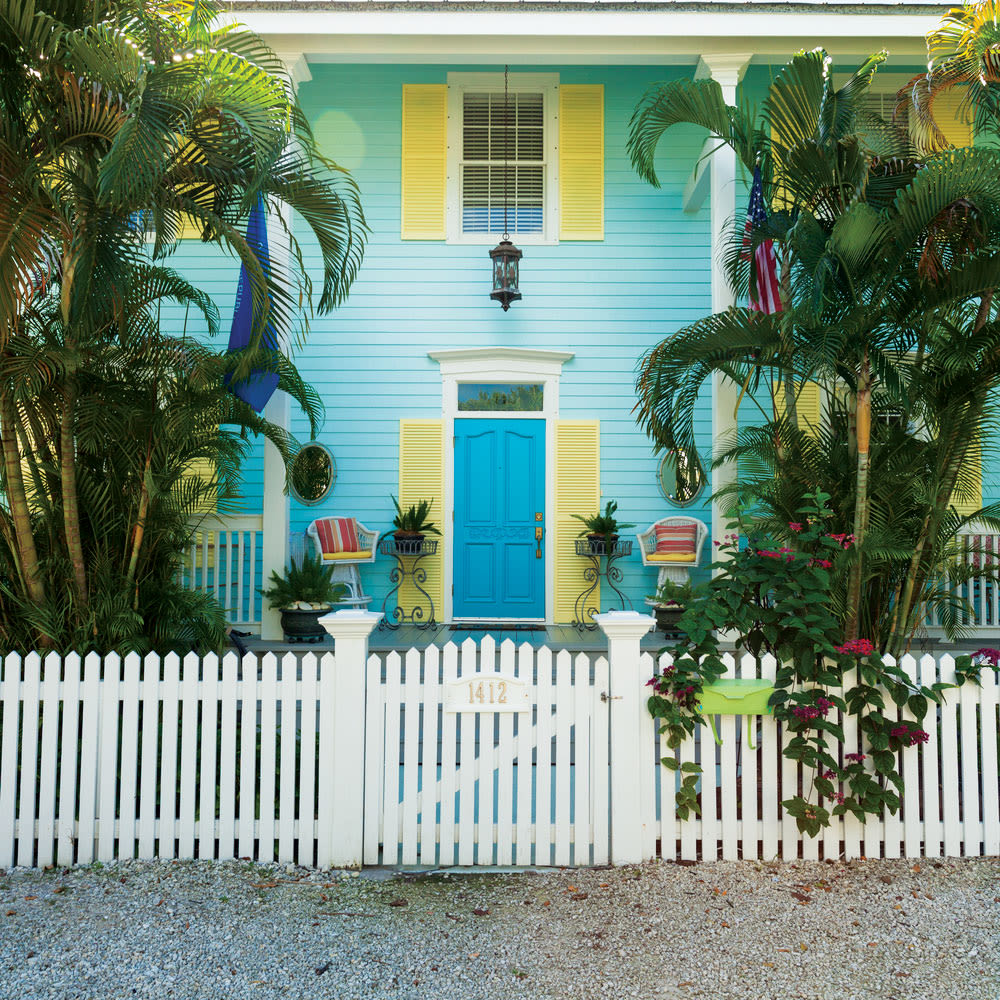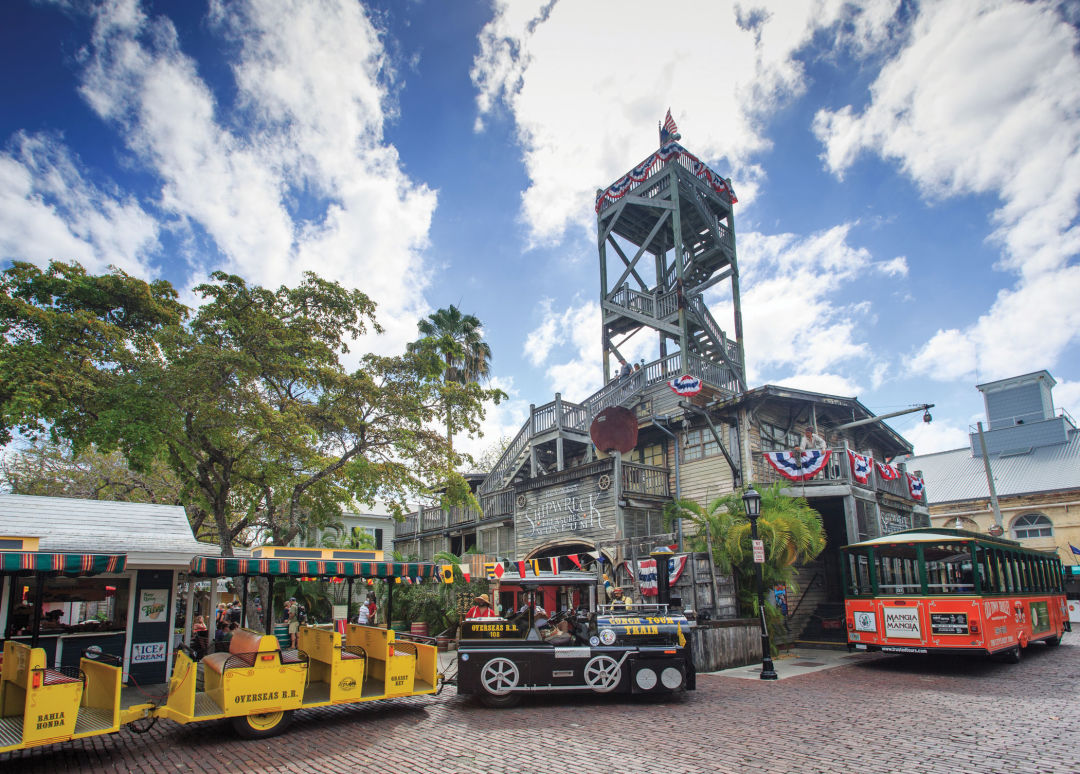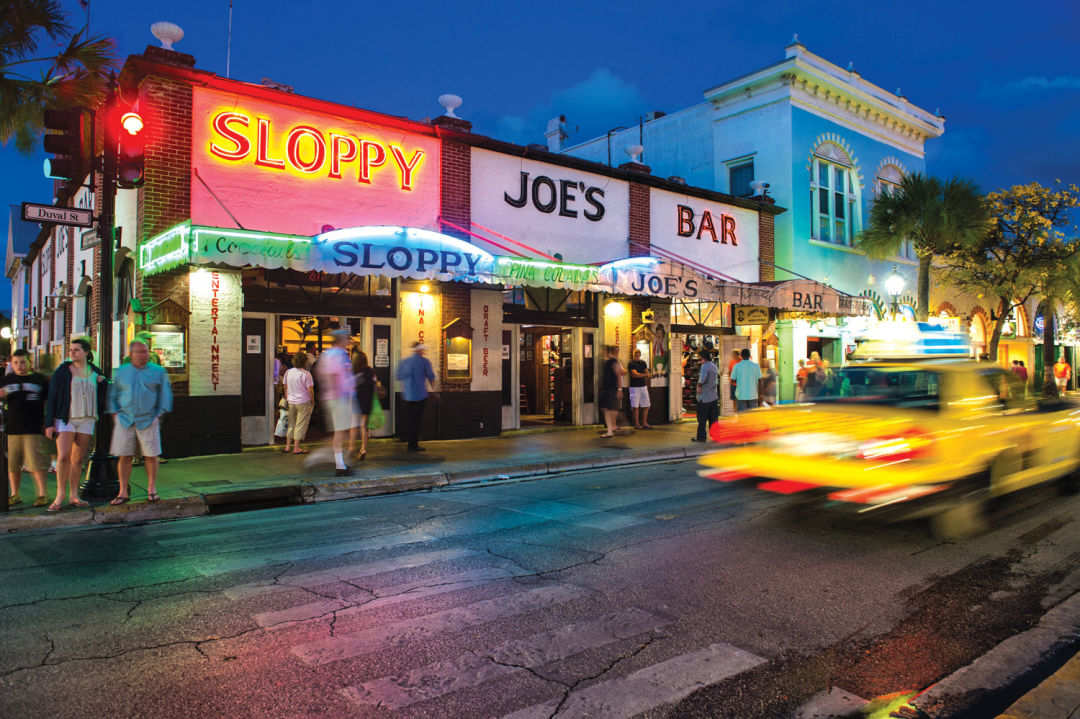Key West Offers Visitors a Unique Spirit and Fabulous Decadence

Key West can’t really be understood until you’ve hit rock bottom, but rock bottom is easy enough to find on the island. It sits just one foot below sea level not far from Mallory Square, in a dank basement lobster hatchery turned movie theater, where a 14-minute documentary plays on an endless loop.
“A wreck was the most wished-for thing,” says the film, one of the highlights of the Key West Shipwreck Museum, which is devoted to the island’s 19th-century heyday, when residents greeted with morbid glee the news that a ship had run aground, spilling its treasures into the sea. Salvaging wrecks was a dangerous business but a lucrative one, and for a time Key West was not only Florida’s most populous city but the richest per capita in the entire country. And even as such days are long gone, the island’s unshakable belief in its own brand of prosperity theology—that great treasures may be found in wrecked lives—continues to make it a fascinating visit.

“Key West is where the weird go pro,” says the driver of the Conch Tour Train, quoting Hunter S. Thompson as we lumber down Duval Street, passing funky boutiques, art galleries, a 70-something woman wearing short-shorts, a couple dressed as pirates, and at least one guy in an “I’m not gay, but $20 is $20” T-shirt. Still, the vibe is more celebratory than desperate, even at legendary watering holes-slash-monuments to dissipation like Sloppy Joe’s and Capt. Tony’s Saloon, where hundreds of bras hang from the ceiling, a tribute of sorts to a couple of 19th-century Vegas prostitutes who turned to a novel form of advertising after finding themselves marooned on the island.

Our 90-minute tour includes a drive past the sumptuously dive-y Lazy Gecko, although it was the Anchor Inn back in the ’70s, when singer-songwriter Jimmy Buffett wrote “Margaritaville” there. Later the song would be a pop masterpiece, and then an attitude, and finally a restaurant chain, but first it was the story of a man whose ship has run aground, a tragedy with so many explanations it’s finally unexplainable (“it’s nobody’s fault…. it could be my fault….it’s my own damn fault”).
A trip to the Gay Key West Visitors Center—and its wonderful exhibition devoted to longtime resident Tennessee Williams—confirms that meditations on human failure are something of an island specialty. It was while ensconced in a sixth-floor suite at the La Concha hotel (recently handsomely renovated) that Williams decided to rework The Poker Game, shifting its attention to one of the greatest wrecks in the history of the American theater—Blanche DuBois—and change its title to A Streetcar Named Desire.
Key West was also where Ernest Hemingway wrote 37 separate endings to his brilliant tale of doomed love between an ambulance driver and a nurse in wartime Italy, A Farewell to Arms. (No. 34, suggested by F. Scott Fitzgerald: The world “breaks everyone,” and those “it does not break it kills.”)
At 907 Whitehead St., on the second floor, you’ll find a small exhibit devoted to Agnes von Kurowsky, the real-life inspiration behind Farewell’s nurse. It’s just one fascinating stop on a tour of Hemingway’s home, a 19th-century mansion originally built for one of the town’s wealthiest salvage wreckers. The writer’s studio is open to view, as are the surrounding gardens, where more than 40 cats prowl the grounds day and night.
There’s no better time to consider the town’s fabulous decadence than at sunrise, when the streets are empty and silent save for the island’s ubiquitous roosters crowing with relief at the arrival of the dawn. And there’s no better place to do so than from the porches of Key West’s many historic inns, especially the Lighthouse Court. Its brightly painted semi-detached cottages, all scrupulously updated, sit just across Whitehead from the Hemingway house.
“Of writers and poets and pirates who walked the dirt beneath this slab each carrying a pocket full of dreams,” reads a poem on the sidewalk by David L. Sloan, author of the wonderfully entertaining Key West Key Lime Cookbook, a tome that teaches that battered lives can even produce treasures of a citrus sort. “Many natives of the Florida Keys,” Sloan writes, “believe that a fruitless tree will produce fruit if it is severely beaten.” Just as in a Hemingway novel, Williams play or Buffett ballad, it seems, “loss of leaves generally results in abundant fruit.”
MORE HISTORY TRIPS
The recorded history of Savannah, Ga., stretches all the way back to 1733, and you can see evidence of those early days in the city’s original grid layout, which survives in the form of 22 city squares that have helped make the city a Southern icon. The Civil War and the end of slavery left the city crushed, but it revived after World War II when residents banded together to preserve the municipality’s inimitable architecture. Wander and marvel at the city’s ornate ironwork, fountains and lush squares.
If you’re searching for history, it’s tough to top the nation’s oldest city, or what Visit Florida more accurately calls the “longest continually inhabited European-founded city in the United States.” We’re talking, of course, about St. Augustine, founded all the way back in 1565. The city boasts a long list of accommodations that run the gamut from campground to resort. The historic district is exceedingly walkable and loaded with worthwhile sights, chief among them the Castillo De San Marcos fortress.
Marjorie Kinnan Rawlings may have grown up in Washington, D.C., Michigan and Wisconsin, but she and her work remain identified with Cross Creek, Fla., where she and her husband purchased 72 acres in 1928. There she began writing about the region’s Cracker culture and penned her classic, The Yearling. The Rawlings homestead is today a state park, where you can revisit 1930s Florida farm life. Off-property, The Yearling Restaurant serves old-Florida fare like venison, frog legs, quail and more.



